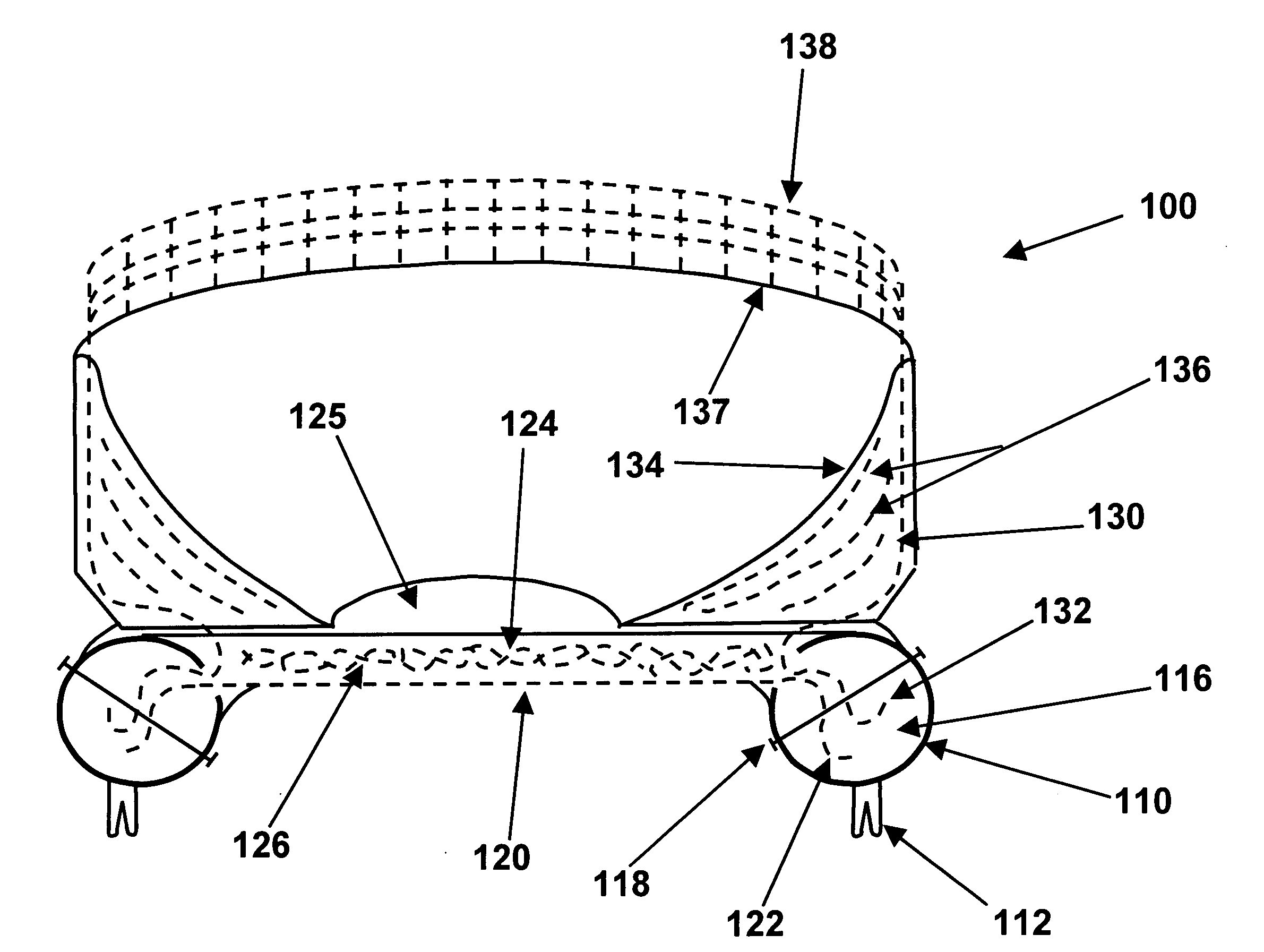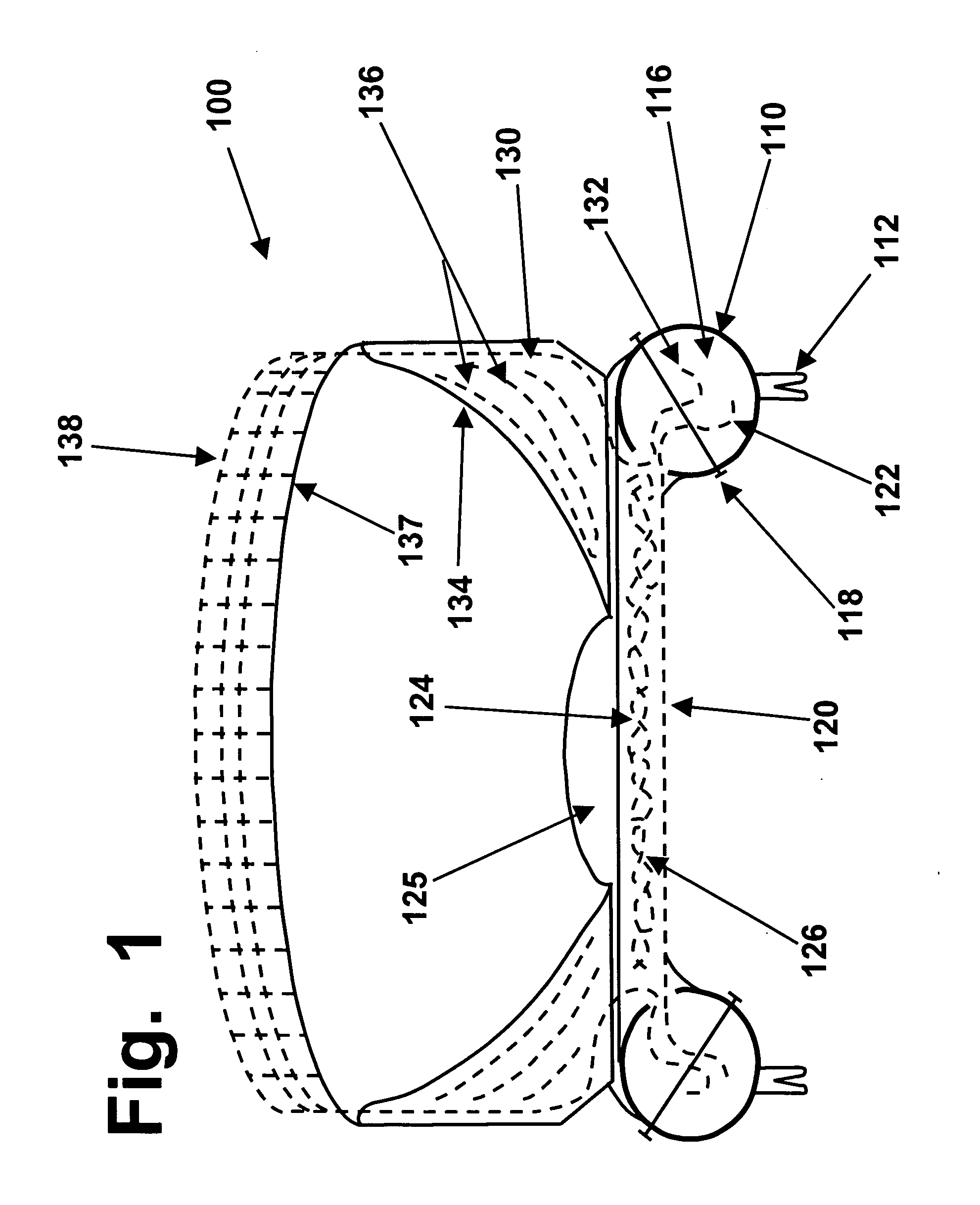The upper surface of a
meniscus is also smooth, wet, and slippery.
Because meniscal segments in human knees are subjected to frequent combinations of compressive and tensile stresses (and sometimes abrasion, especially in people suffering from chondromalacia,
arthritis, injuries, or other problems that can cause a loss of smoothness in cartilage surfaces), meniscal damage often occurs in humans, and occasionally in
livestock and other animals.
However, because of their complex structures and anchoring, and because of the need to create and sustain very smooth and constantly wet surfaces on both the upper and lower surfaces of each meniscal wedge, meniscal implants in the prior art have not been entirely adequate.
That device has some utility; however, because its anchoring structure does not resemble or emulate the anchoring
system of a healthy native meniscal segment, that type of
implant could not move, respond, and behave in the same ways that a natural meniscal segment will move and behave.
That may have offered some improvement over prior designs, but it still fell short of being optimal.
In particular, the '667 patent did not address the crucial issue of how the anchoring pins that were described, for anchoring that type of
implant, apparently would need to penetrate and damage the natural cartilage (or a cartilage-replacing
implant) that sits on top of the tibial
plateau.
That is a major issue, because the act of driving steel pins through the smooth-surfaced cartilage on a tibial
plateau would
pose grave risks of damaging that
cartilage surface, and creating an
abrasive surface that would also damage the femoral runner as well.
However, that apparent problem was not addressed in the Richmond '667 patent.
However, those and numerous other efforts to replace cartilage in load-bearing joints, by using transplanted cells to generate new biological cartilage, have generally failed to overcome the problems that arise when a resorbable implant begins to release particles and debris into a repaired joint.
Because of that problem, the use of resorbable implants that hold transplanted cells, for regenerating new cartilage, has been limited to only two relatively small niches: (i) cosmetic repair of cartilage in body parts that are not subjected to loadings and stresses, such as ears and noses; and, (ii) repair of small joint defects caused by injuries, usually limited to relatively young patients.
Since the crucial problem of debris being released by partially-dissolved resorbable implants has not been overcome (and likely cannot be overcome, because of the inherent nature of how resorbable implants are digested and dissolved, over a span of time), there appears to be little or no serious interest in trying to use resorbable materials carrying transplanted cells, for meniscal replacements.
However, the Posner '730 patent appears to have taken a flawed approach, which is likely to jeopardize and diminish the strength, stability, and long-term durability of the implants disclosed therein.
This problem arises from Posner's efforts and intent to leave behind a
peripheral remnant from the outer edge of a natural meniscal wedge that will be partially removed and replaced.
If a driver attempted to drive a car by gripping a rotatable shaft, having a
diameter of only about four to six inches, the driver would not have firm and reliable control over the steering of the car.
However, because of the inherent
weakness of hyaline cartilage (with its short reinforcing fibers made of collagen), the thicker and therefore more vulnerable labral rims which form the edges of the cartilage socket segments are made of the same type of more heavily reinforced
fibrocartilage that is used to make meniscal segments, in knees.
 Login to View More
Login to View More  Login to View More
Login to View More 


